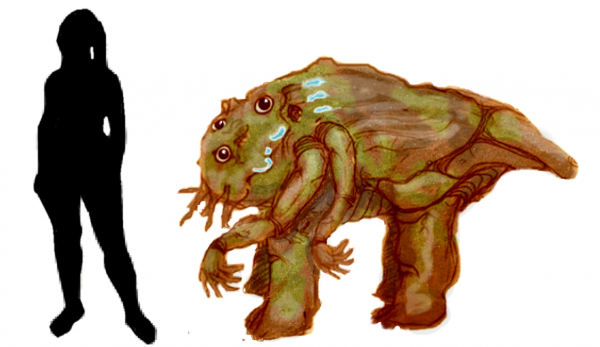BY LETTER
First Contact
Sophonts > Xenosophonts > Cthonids
Sophonts > Xenosophonts > Limners
Sophonts > Xenosophonts > Meistersingers
Sophonts > Xenosophonts > Muuh
Sophonts > Xenosophonts > Paulans
Sophonts > Xenosophonts > Pipers
Sophonts > Xenosophonts > Silent Ones
Sophonts > Xenosophonts > Soft Ones
Sophonts > Xenosophonts > To'ul'hs
Sophonts > Xenosophonts > Wayfarers
Sophonts > Xenosophonts
Sophonts > Xenosophonts > Limners
Sophonts > Xenosophonts > Meistersingers
Sophonts > Xenosophonts > Muuh
Sophonts > Xenosophonts > Paulans
Sophonts > Xenosophonts > Pipers
Sophonts > Xenosophonts > Silent Ones
Sophonts > Xenosophonts > Soft Ones
Sophonts > Xenosophonts > To'ul'hs
Sophonts > Xenosophonts > Wayfarers
Sophonts > Xenosophonts
Strategies and policies for contact with alien life forms | |
 Image from Steve Bowers | |
| The Planet Tohul (To'ul'h Prime) where the first contact with intelligent aliens was made | |
Even before manned spaceflight became a reality, the question of contact with extraterrestrial life had been considered in some detail. One anticipated problem was cross-infection, where alien microbes might cause a hazard to Earth life and vice versa. The first astronauts to reach the Earth's Moon were quarantined on their return, and increasing efforts were made during the early Interplanetary Age to avoid contamination of spacecraft and planetary surfaces. In the event, no living organisms of any kind were found in the Solar System outside of Earth, and this fact gave some weight to the hypothesis that life was in fact vanishingly rare in the universe.
However using powerful space-based telescope arrays and sensitive spectrometry, a number of terrestrial planets in relatively nearby solar systems were found to show some of the expected signatures of life. So by the time the first interstellar probes were launched, strategies for dealing with alien lifeforms were once again an important subject for debate.
Contact with Alien Life forms (Xenobiota)
The closest such world, Delta Pavonis IV was made an early target for investigation, and by 360 a.t. the presence of a biosphere had been confirmed by the probe Carl Sagan. When colonists arrived in that system the planet (now named Darwin) was declared a scientific reserve. However this embargo only lasted until the early First Federation period, and the planet became an ecological battlefield between preservationists and biotech concerns attempting to exploit the exotic biota.Other planets with biospheres were also encountered in this early period; the mature biosphere of Trees was a magnet for biocentric explorers, and instead of being quarantined was settled by a specially modified clade of tweaks with altered biochemistry. The Tree-dweller tweaks attempted to integrate with the local environment, with some success, but they were not politically powerful and were often subjugated by external rulers such as the Conver Ambi (who themselves were not adapted to the biochemistry of Trees life).
Another world with a primitive xenobiosphere, Rajasekar, suffered an ecological disaster due to a reaction between the indigenous life and the introduced lifeforms, and was placed off-limits for non-robotic colonisation. Although lifeforms from different worlds cannot usually infect each other, they may be mutually toxic or cause allergic reactions.
At this time a number of strategies emerged for dealing with xenobiota on a potential colony planet, some deliberate, some on an ad-hoc basis. Since the planets with xenobiospheres were often the most desirable planets for colonisation purposes, one or more of the following courses of action could be taken.
Extermination: exterminate the life/sterilise the planet; this was often the easiest option, but could be quite tricky to do in practice. The Terranova foundation and later, certain NoCoZo and Objectivist explorers favoured this strategy.
Quarantine: Isolate the planet and restrict all access; you can still explore the biosphere/ do research/make TV documentaries, but only if you can guarantee that you interact without risk of cross-infection. Many such quarantined worlds later became Caretaker Protectorates.
Self-Modification: Adapt a population of colonists to be compatible with the new environment; the original biosphere may survive, but it would have to compete with a civilised world of colonists and genetically tailored life, much of which would probably be agricultural in nature. This approach would resemble in some ways the colonisation of an isolated location on Earth, say Australia, and there could be numerous threats to the local biosphere. But it would at least have a chance. Birnam Ecotech and the Genen families were early adopters of this strategy.
One problem with this strategy is that the colonists will now be adapted to the biosphere of that planet, and no longer compatible with Earth-life; this means they may have problems interacting with other terragen populations. For instance they may find Earthly food allergenic or toxic, or need to avoid physical contact with other clades for similar reasons.
Evacuation: Removal and conservation of the biosphere; a representative sample could be frozen, or reduced to stored DNA information or the equivalent. Later this strategy was extended, and explorers would build special habitats for the biota where it could thrive off-planet without affecting the terraformation process, The Zoeific Biopolity used this strategy extensively. In more recent millennia some adaptation of this strategy has been followed by many Sephirotic exploration ventures. An adaptation of this strategy has been developed by the Metasoft Version Tree, where a xenoecology is recreated in virtual form, and this strategy has been used independently by the Panvirtuality.
 Image from Arik and Steve Bowers | |
| A Jade Chime Singer, one of several species which have already been contacted | |
Contact with Intelligent Aliens (Xenosophonts)
When the first intelligent alien race, the To'ul'hs, were discovered, a new set of strategies had to be conceived; this first contact with xenosophonts was not entirely satisfactory, as the culture shock led to a certain amount of strife and division within To'ul'h society. Later contact with the Ultimates, a highly evolved but static phylum of xenosophonts in the Black Acropolis was followed by a period of isolation from mainstream society, and a hybrid civilisation formed which later transcended. Many view this hybridisation between terragen and Ultimate society to have been a mistake, as the Acropolis volume became a dangerous location for many millennia afterwards.To avoid these mistakes new strategies have evolved over time, but as each new first contact event is unique and often occurs on the edge of the Terragen sphere of expansion near the Light Speed Frontier, these strategies are often irrelevant or adopted only in part.
Remote observation: Civilisations that are pretechnological are generally observed without contact, all surveillance occurs using technology that is undetectable by the civilisation concerned. The Paulans and the Pipers have been under almost total cultural embargo since their discovery, with certain exceptions (see below)
Subversion: Now officially discouraged, some early contacts were preceded by attempts to influence the culture using memetics. The very first contact, with the medieval level civilisation of the To'ul'hs, suffered because of over-enthusiastic cultural manipulation. A somewhat later attempt to infiltrate the computer systems of the Silent Ones was a complete failure, due to their advanced and exotic nature.
Remote Contact: After a period of remote observation the xenosophonts will be contacted remotely, by radio or laser communication; the Jeepers of Mik's planet were contacted in this fashion, and were enthusiastic about the prospect of meeting Terragen representatives. Since they are an artificial species, made long ago by an unknown civilisation, they had jumped to the conclusion that the Terragens were in fact their creators; some still believe this, and in this case the contact strategy might therefore be seen to have failed (in some respects).
Individual Contact: Sometimes called `abduction', this strategy involves secretly withdrawing members of the society and exposing them to full contact; once the individual has recovered from the ensuing cultural impact, xe will then be returned to the society as a representative of Terragen Civilisation. This method was partially used to contact the To'ul'h, after extensive observation and in addition to other strategies, and the result was at first an ambitious and successful hybrid culture.
Similar individuals, extracted from the Piper species, have declined to make full contact with their own race, which even today remains mostly isolated. Instead they have started a subculture of their own among the Sephirotic empires, and state that they will make contact with their home planet `in due course'
Contact Through Avatars: Most xenosophonts find the human form exotic and unsettling. To reduce this problem the species is contacted, usually after a lengthy period of observation, by remote-controlled avatars in a form that the species will find non-threatening or otherwise acceptable. This technique has been used with the Cthonid species and the Limners, with some success. However some contact specialists regard this strategy as too interventionist to be used in every case. Any attempt to disguise the nature of Terragen life and society might be considered deceitful by the contactee civilisation, when and if they discover the truth.
Contact Between Equals: Contact with species which are capable of interstellar travel, and/or a medium-to-high technology level is generally carried out on a cautious, diplomatic basis. Although the Terragen Archailects occupy a very high toposophic level and have advanced technology and vast intellect, they are not generally on hand when first contact with a spacefaring species is made. Rather contact is made by explorers at the far edge of Terragen expansion, who may find themselves on a comparable level of technology to the contactees, or indeed be far outclassed. The utmost care must be taken not to reveal unnecessary information to such a race, in case the relationship develops into conflict for whatever reason. In return it must be assumed that xenosophonts from an advanced civilisation may themselves not reveal all details of their society and technology to the Terragen representatives.
In the past, certain xenosophont civilisations have been recognized as equals in this fashion, such as the Muuh, the Silent Ones and the Meistersingers. However it seems apparent that each of these races have withheld considerable amounts of information about their society and technology. For instance the existence of the Muuh System of Response, an advanced artificially intelligent defense system, was not suspected for several centuries. Such secrecy may be expected to be a normal part of xenosophont relations for the foreseeable future.
Related Articles
Appears in Topics
Development Notes
Text by Steve Bowers
Initially published on 15 March 2008.
Initially published on 15 March 2008.






